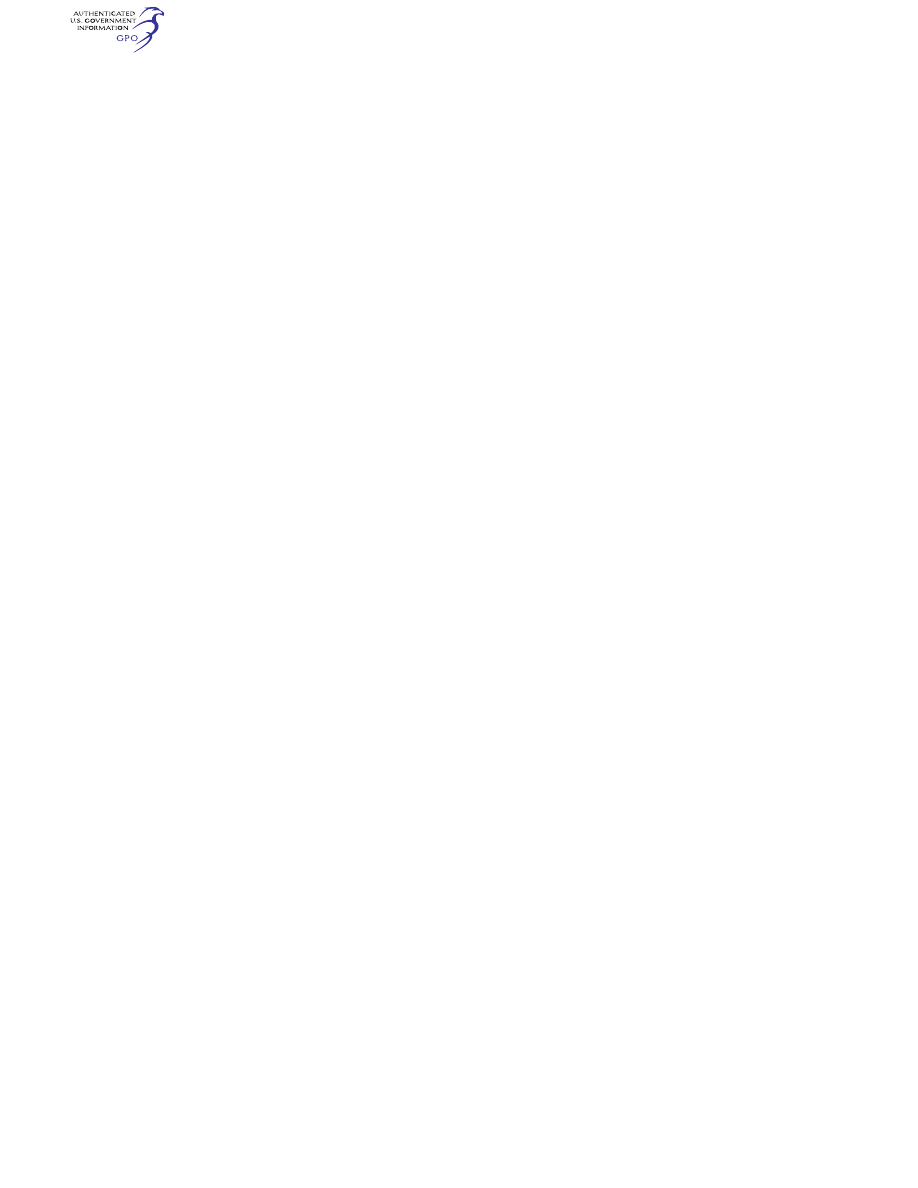
309
Federal Aviation Administration, DOT
§ 25.899
fire (e.g., equipment shutdown or actu-
ation of a fire extinguisher) quick act-
ing means must be provided to alert
the crew.
(d) Each area where flammable fluids
or vapors might escape by leakage of a
fluid system must be identified and de-
fined.
[Amdt. 25–23, 35 FR 5676, Apr. 8, 1970, as
amended by Amdt. 25–46, 43 FR 50597, Oct. 30,
1978]
§ 25.865
Fire protection of flight con-
trols, engine mounts, and other
flight structure.
Essential flight controls, engine
mounts, and other flight structures lo-
cated in designated fire zones or in ad-
jacent areas which would be subjected
to the effects of fire in the fire zone
must be constructed of fireproof mate-
rial or shielded so that they are capa-
ble of withstanding the effects of fire.
[Amdt. 25–23, 35 FR 5676, Apr. 8, 1970]
§ 25.867
Fire protection: other compo-
nents.
(a) Surfaces to the rear of the na-
celles, within one nacelle diameter of
the nacelle centerline, must be at least
fire-resistant.
(b) Paragraph (a) of this section does
not apply to tail surfaces to the rear of
the nacelles that could not be readily
affected by heat, flames, or sparks
coming from a designated fire zone or
engine compartment of any nacelle.
[Amdt. 25–23, 35 FR 5676, Apr. 8, 1970]
§ 25.869
Fire protection: systems.
(a) Electrical system components:
(1) Components of the electrical sys-
tem must meet the applicable fire and
smoke protection requirements of
§§ 25.831(c) and 25.863.
(2) Equipment that is located in des-
ignated fire zones and is used during
emergency procedures must be at least
fire resistant.
(3) EWIS components must meet the
requirements of § 25.1713.
(b) Each vacuum air system line and
fitting on the discharge side of the
pump that might contain flammable
vapors or fluids must meet the require-
ments of § 25.1183 if the line or fitting is
in a designated fire zone. Other vacuum
air systems components in designated
fire zones must be at least fire resist-
ant.
(c) Oxygen equipment and lines
must—
(1) Not be located in any designated
fire zone,
(2) Be protected from heat that may
be generated in, or escape from, any
designated fire zone, and
(3) Be installed so that escaping oxy-
gen cannot cause ignition of grease,
fluid, or vapor accumulations that are
present in normal operation or as a re-
sult of failure or malfunction of any
system.
[Amdt. 25–72, 55 FR 29784, July 20, 1990, as
amended by Amdt. 25–113, 69 FR 12530, Mar.
16, 2004; Amdt. 25–123, 72 FR 63405, Nov. 8,
2007]
M
ISCELLANEOUS
§ 25.871
Leveling means.
There must be means for determining
when the airplane is in a level position
on the ground.
[Amdt. 25–23, 35 FR 5676, Apr. 8, 1970]
§ 25.875
Reinforcement near propel-
lers.
(a) Each part of the airplane near the
propeller tips must be strong and stiff
enough to withstand the effects of the
induced vibration and of ice thrown
from the propeller.
(b) No window may be near the pro-
peller tips unless it can withstand the
most severe ice impact likely to occur.
§ 25.899
Electrical bonding and protec-
tion against static electricity.
(a) Electrical bonding and protection
against static electricity must be de-
signed to minimize accumulation of
electrostatic charge that would cause—
(1) Human injury from electrical
shock,
(2) Ignition of flammable vapors, or
(3) Interference with installed elec-
trical/electronic equipment.
(b) Compliance with paragraph (a) of
this section may be shown by—
(1) Bonding the components properly
to the airframe; or
(2) Incorporating other acceptable
means to dissipate the static charge so
VerDate Sep<11>2014
09:06 Jun 28, 2024
Jkt 262046
PO 00000
Frm 00319
Fmt 8010
Sfmt 8010
Y:\SGML\262046.XXX
262046
jspears on DSK121TN23PROD with CFR

310
14 CFR Ch. I (1–1–24 Edition)
§ 25.901
as not to endanger the airplane, per-
sonnel, or operation of the installed
electrical/electronic systems.
[Amdt. 25–123, 72 FR 63405, Nov. 8, 2007]
Subpart E—Powerplant
G
ENERAL
§ 25.901
Installation.
(a) For the purpose of this part, the
airplane powerplant installation in-
cludes each component that—
(1) Is necessary for propulsion;
(2) Affects the control of the major
propulsive units; or
(3) Affects the safety of the major
propulsive units between normal in-
spections or overhauls.
(b) For each powerplant—
(1) The installation must comply
with—
(i) The installation instructions pro-
vided under §§ 33.5 and 35.3 of this chap-
ter; and
(ii) The applicable provisions of this
subpart;
(2) The components of the installa-
tion must be constructed, arranged,
and installed so as to ensure their con-
tinued safe operation between normal
inspections or overhauls;
(3) The installation must be acces-
sible for necessary inspections and
maintenance; and
(4) The major components of the in-
stallation must be electrically bonded
to the other parts of the airplane.
(c) For each powerplant and auxiliary
power unit installation, it must be es-
tablished that no single failure or mal-
function or probable combination of
failures will jeopardize the safe oper-
ation of the airplane except that the
failure of structural elements need not
be considered if the probability of such
failure is extremely remote.
(d) Each auxiliary power unit instal-
lation must meet the applicable provi-
sions of this subpart.
[Doc. No. 5066, 29 FR 18291, Dec. 24, 1964, as
amended by Amdt. 25–23, 35 FR 5676, Apr. 8,
1970; Amdt. 25–40, 42 FR 15042, Mar. 17, 1977;
Amdt. 25–46, 43 FR 50597, Oct. 30, 1978; Amdt.
25–126, 73 FR 63345, Oct. 24, 2008]
§ 25.903
Engines.
(a)
Engine type certificate. (1) Each en-
gine must have a type certificate and
must meet the applicable requirements
of part 34 of this chapter.
(2) Each turbine engine must comply
with one of the following:
(i) Sections 33.76, 33.77 and 33.78 of
this chapter in effect on December 13,
2000, or as subsequently amended; or
(ii) Sections 33.77 and 33.78 of this
chapter in effect on April 30, 1998, or as
subsequently amended before Decem-
ber 13, 2000; or
(iii) Comply with § 33.77 of this chap-
ter in effect on October 31, 1974, or as
subsequently amended prior to April
30, 1998, unless that engine’s foreign ob-
ject ingestion service history has re-
sulted in an unsafe condition; or
(iv) Be shown to have a foreign object
ingestion service history in similar in-
stallation locations which has not re-
sulted in any unsafe condition.
N
OTE
: § 33.77 of this chapter in effect on Oc-
tober 31, 1974, was published in 14 CFR parts
1 to 59, Revised as of January 1, 1975. See 39
FR 35467, October 1, 1974.
(3) Each turbine engine must comply
with one of the following paragraphs:
(i) Section 33.68 of this chapter in ef-
fect on January 5, 2015, or as subse-
quently amended; or
(ii) Section 33.68 of this chapter in ef-
fect on March 26, 1984, or as subse-
quently amended before January 5,
2015, unless that engine’s ice accumula-
tion service history has resulted in an
unsafe condition; or
(iii) Section 33.68 of this chapter in
effect on October 31, 1974, or as subse-
quently amended prior to February 23,
1984, unless that engine’s ice accumula-
tion service history has resulted in an
unsafe condition; or
(iv) Be shown to have an ice accumu-
lation service history in similar instal-
lation locations which has not resulted
in any unsafe conditions.
(b)
Engine isolation. The powerplants
must be arranged and isolated from
each other to allow operation, in at
least one configuration, so that the
failure or malfunction of any engine, or
of any system that can affect the en-
gine, will not—
(1) Prevent the continued safe oper-
ation of the remaining engines; or
(2) Require immediate action by any
crewmember for continued safe oper-
ation.
VerDate Sep<11>2014
09:06 Jun 28, 2024
Jkt 262046
PO 00000
Frm 00320
Fmt 8010
Sfmt 8010
Y:\SGML\262046.XXX
262046
jspears on DSK121TN23PROD with CFR

